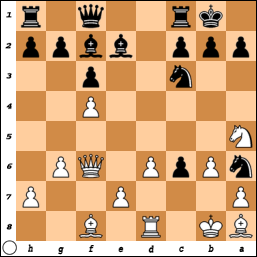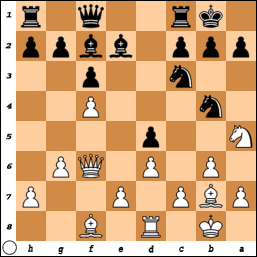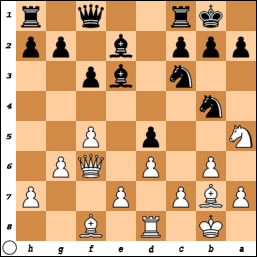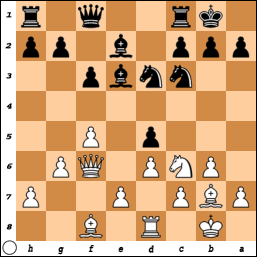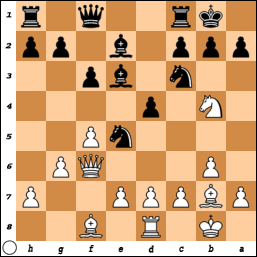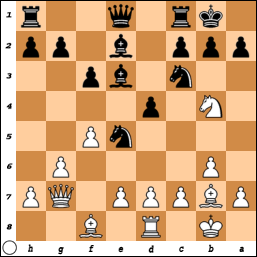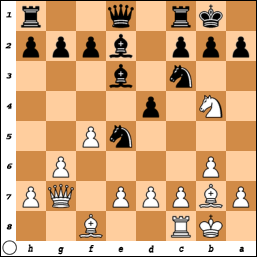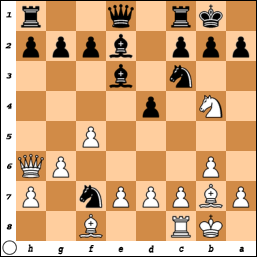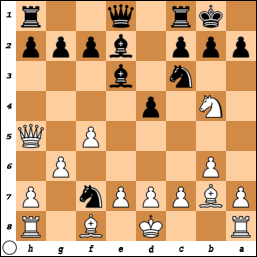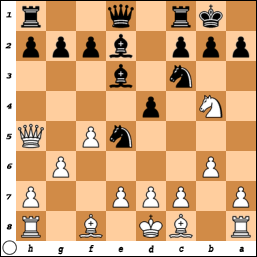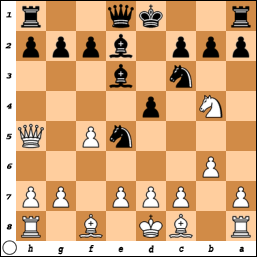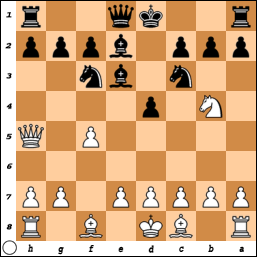Comments
-
The End of WokeI do view woke as a secular 'religion'. John McWhorter's "Woke Racism" is great on this issue - he refers to the leaders as "The Elect" - a self-appointed priestly class. — Jeremy Murray
It always cracks me up when people demean religion like this.
I'm sure that everyone at Fire's law firm has religious reverence for their DEI officer, and that the insurance discount they got for having a DEI officer wasn't an effort by the insurance company to lower risk but as a form of religious penance. :lol: -
The End of WokeMaybe not nothing, but you certainly don’t make much of all I’m saying. — Fire Ologist
What exactly have I not made much of?
It is insulting to say I’m just parroting talking points, you know that right? — Fire Ologist
I just gave an example of you mindlessly parroting twisted political rhetoric a few posts above on this page:
The democrat candidate for governor in Virginia tells everyone to “let your rage fuel you”.
— Fire Ologist
This is a good example of how you let divisive rhetoric influence you.
Abigail Spanberger prefaced it by saying it was advice from her mother, responding to political frustration:
“Let your rage fuel you.”
“And so, Mom, I love you. I thank you for the sage advice. And to the rest of us, every time we hear a new story, we let it fuel us.”
She went on to elaborate how she meant to use it:
“Every time we turn on the news, we let it fuel us. Every time something bad is happening … we say, ‘Oh that’s motivation.’ Every time something happens in the world … we just say, ‘Boy, am I motivated today.’ We write more postcards, we knock more doors, we make more phone calls, we tell more friends about the importance of this election.”
She also said that disagreements over policy, perspectives or even worldviews should never lead to violence in the same speech.
Her Republican challenger Winsome Earle-Sears has been citing Spanberger’s “let your rage fuel you” quote in ads, alleging that Spanberger is encouraging violent rhetoric. — praxis -
The End of WokeIt was my summation of your view not a direct quote. — DingoJones
I haven’t even suggest that “there is nothing to what Fire is saying but dishonest Maga talking points.” Why are you being dishonest about this? -
The End of WokeIve been following along. — DingoJones
In that case maybe you can show me where I said “That there is nothing to what Fire is saying but dishonest Maga talking points.” -
The End of WokeThe democrat candidate for governor in Virginia tells everyone to “let your rage fuel you”. — Fire Ologist
This is a good example of how you let divisive rhetoric influence you.
Abigail Spanberger prefaced it by saying it was advice from her mother, responding to political frustration:
“Let your rage fuel you.”
“And so, Mom, I love you. I thank you for the sage advice. And to the rest of us, every time we hear a new story, we let it fuel us.”
She went on to elaborate how she meant to use it:
“Every time we turn on the news, we let it fuel us. Every time something bad is happening … we say, ‘Oh that’s motivation.’ Every time something happens in the world … we just say, ‘Boy, am I motivated today.’ We write more postcards, we knock more doors, we make more phone calls, we tell more friends about the importance of this election.”
She also said that disagreements over policy, perspectives or even worldviews should never lead to violence in the same speech.
Her Republican challenger Winsome Earle-Sears has been citing Spanberger’s “let your rage fuel you” quote in ads, alleging that Spanberger is encouraging violent rhetoric. -
The End of Woke
If this interests you so much just read the damn thread. :roll:
The point is that you’ve been influenced by divisive political rhetoric — and are even proudly promoting it — rather than seeing things as they truly are. For example, your definition of woke is inaccurate because it essentializes “woke” into a narrow, partisan frame. It portrays wokeness as treating race, sex, and power as the most important factors in all choices, when in reality most who identify with or are labeled as “woke” simply emphasize awareness of systemic inequities alongside other concerns. It also reduces wokeness to “behavior and ideas” tied to progressive liberals and DEI initiatives, reflecting a common conservative critique rather than a neutral or self-described meaning. In practice, “woke” is a broader, contested term rooted in social awareness, not just a partisan ideology. — praxis -
The End of WokeDo you deny the Left hates MAGA? — Fire Ologist
You can look at approval ratings on sites like this I guess: New Marquette Law School Poll National Survey
Do you deny hatred from the left is behind all of the protests and assaults and deaths and billions in property destruction these past 5 plus years in America? — Fire Ologist
Wasn't that about police brutality? If not, what exactly are you referring to?
No leftist hatred on the streets of Portland today? — Fire Ologist
Isn't that about ICE raids?
That there is nothing to what Fire is saying but dishonest Maga talking points. If Im wrong about that view then apologies. — DingoJones
I've said that his views regarding what woke is are "inaccurate" and "skewed" by MAGA rhetoric. -
Friendly Game of Chess
-
The End of WokeWe know you are Praxis, but he’s trying very hard to get you not to be. — DingoJones
Do you also deny that MAGA used Kirk’s assassination for anti-leftist hate mongering? -
The End of WokeThat the right hates leftists? I’m not denying that. What’s not to hate? — Fire Ologist
Not what I was asking.
I’ll leave you with a quote from someone who Charlie Kirk described as “awful” and “not a good person”:
“I have decided to stick with love. Hate is too great a burden to bear.”
— Martin Luther King Jr. -
The End of Wokeanti-leftist hate mongering was monumental,
— praxis
It was? Monumental? Not enough safe spaces for you in the US? Seriously? Where did you get that - what shapes your opinion? Anything skewed or exaggerated there?
…
Yes, Forgiveness, and offers to debate and discuss. — Fire Ologist
So you’re just denying it.
Do you believe Kirk’s killer was a leftist? -
The End of Wokenone of the MAGA fascists rioted or retaliated with anything but more forgiveness — Fire Ologist
Nothing but forgiveness, aye? The anti-leftist hate mongering was monumental, and despite no public, verified ideological manifesto or affiliation having been established to date.
Once again your skewed view of reality shaped by MAGA propaganda on display. -
The End of WokeYou are talking about revising and supplementing my working definition, not tossing it. So your judgments of how wrong I am sound contradictory. — Fire Ologist
Rather, your fragile ego can’t stand being “inaccurate”. -
Friendly Game of Chess
Not sure if you're familiar so I got a video that explains passing en passant.
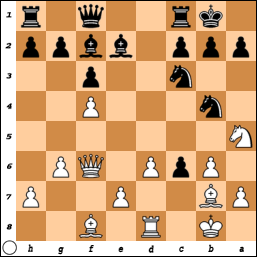
Your move.
Btw, I was assaulted by an ad for shoes targeting the elderly with poor ballance. Poor targeting. -
The End of WokeJust because someone else (whatever a “MAGA” is??) sounds like me has nothing to do with the content of what I said. — Fire Ologist
The point is that you’ve been influenced by divisive political rhetoric — and are even proudly promoting it — rather than seeing things as they truly are. For example, your definition of woke is inaccurate because it essentializes “woke” into a narrow, partisan frame. It portrays wokeness as treating race, sex, and power as the most important factors in all choices, when in reality most who identify with or are labeled as “woke” simply emphasize awareness of systemic inequities alongside other concerns. It also reduces wokeness to “behavior and ideas” tied to progressive liberals and DEI initiatives, reflecting a common conservative critique rather than a neutral or self-described meaning. In practice, “woke” is a broader, contested term rooted in social awareness, not just a partisan ideology. -
The End of WokeHe was heavily religious. I should probably not need to elaborate. But if I do, the point is that if you are taught, and believe, that the Bible is the Big Man Word, then a word like 'abomination' is descriptive, not moral. I take your point, but this explication should make it quite clear what I'm trying to get across: a non-religious person using that phrase would be as you say. Charlie using it, generally, is not. — AmadeusD
The Bible contains numerous passages that endorse or regulate practices considered morally repugnant today, such as human ownership. Charlie Kirk has explicitly described slavery as “bad and evil,” suggesting that he does not view the Bible as a literal description of reality. If slavery is understood as part of society’s proper organization under God’s covenant, then Kirk’s statement implies a judgment that God’s covenant itself would be “bad and evil.” -
The End of WokeOk.
How? — Fire Ologist
It shows in your previous post. Can you really not see it?
AI verdict: Fire Ologist’s posts repeatedly use frames and metaphors common in MAGA / right-wing anti-woke rhetoric: “mob rule”, media bias, schools as indoctrination sites, victimization of conservatives, and reduction of “woke” to a leftist ideological orthodoxy. -
The End of WokeIt’s just, me and Jeremy and many others on this thread seem to be able to identify what woke means, what is woke, and what isn’t. And the woke people on the thread won’t talk about it, and say they don’t know what woke means. And would rather talk about Hitler. — Fire Ologist
I just searched the topic and I haven’t mentioned Hitler even once, and I’m sure that I haven’t said that I don’t know what woke means.
I just want to engage on the issues. The issue is “the End of Woke” so seems to me a working definition of woke, from a woke subscriber, would be instructive. — Fire Ologist
Honestly, to me your ideas about it seem skewed by political (basically MAGA) rhetoric. That’s fine, literally millions of Americans subscribe to the anti-woke movement.
I am fully subscribed to looking at society (politics, religion, art, morality, language, etc) through the lens of power relations. I think it’s ignorant or foolish not to. I’m not a social justice warrior though, and have become even less interested in that project since participating in this topic and being influenced by Nietzschean thought. -
The End of Wokefolks like praxis and Mijin, who would rather not say want woke IS — Fire Ologist
I don’t get the fixation on this. Is it supposed to be a gotcha like asking a Democrat what a woman is or something? -
Friendly Game of Chess
We're cooking with gas now.
I always wanted to say that so thanks for helping to provide an opportunity.
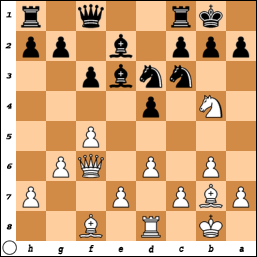
Your move. -
The End of WokeIf things remain on the current trajectory for another year, and things get better in the economy at all, and there is no “blue wave” (Democrat takeover of Congress) next November, the media (maybe even Hollywood) will have to pivot.
Once in a while, the world might see a lovable conservative. — Fire Ologist
Trump Tells Generals the Military Will Be Used to Fight ‘Enemy Within’
Identity politics, a vital progressive tactic, creates outsiders and insiders by its very nature. — Fire Ologist
You mean 'oppressor and oppressed', not othering, right? Remember, the first wokeist was Karl Marx. :lol:
Progressives can’t fathom a good person could possibly hold conservative, Republican opinions. — Fire Ologist
Jesus, pull the hook out of your mouth. Numerous studies reveal that Americans are not nearly as politically divided as political rhetoric — such as Trump’s — might suggest. -
Friendly Game of Chess
Aha, Shatranj rules where a king can castle while in check. So be it! It won't save your castle though. :death:
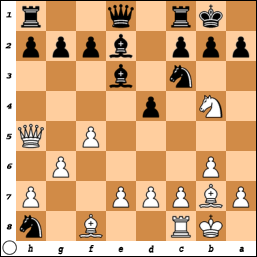
Your move. -
The End of WokeThe progressives can’t fathom a different opinion than their own. — Fire Ologist
I can understand different opinions. It’s not that difficult.
Any outsider on any issue must be a facist/racist/sexist, and all of those who hold any opinion that opposes them, indicates to them a person who cannot be trusted on anything. — Fire Ologist
“Outsider” is an odd term to use.
Btw, I don’t trust people who make false statements.
Such people are to be feared, hated and silenced. — Fire Ologist
I don’t fear, hate, or silence people who make false statements. I usually just try to correct them. -
Friendly Game of ChessWtf? — Mikie
I couldn't decide between taking his queen or forking the king/rook so I castled. Castling is usually a good move. And Outlander is right about my irrational attachment to the bishop. -
The End of Wokedefended his positions on conceptual grounds — AmadeusD
The word “abomination” generally means something regarded with extreme disgust, hatred, or loathing. How do you defend that on conceptual grounds?
No one needs to feel, much less encourage others to feel, disgust and hatred towards trans people. -
The End of WokeI predicted the comments that would follow Kirk's assassination, as well as the lack of comments. Didn't you? — Jeremy Murray
I saw a few clips of transgender folks who seemed happy about it. I guess that’s understandable given that they didn’t know Kirk on a personal level and Kirk openly referred to them as abominations. Honestly, if someone publicly promoted the idea that I was an abomination merely because I was a transsexual or whatever I would be happy they were gone. You can’t argue with irrational disgust and hatred.
I couldn’t have predicted how MAGA would use the assassination for woke/leftist hate-mongering. That’s a new low.
praxis

Start FollowingSend a Message
- Other sites we like
- Social media
- Terms of Service
- Sign In
- Created with PlushForums
- © 2026 The Philosophy Forum
